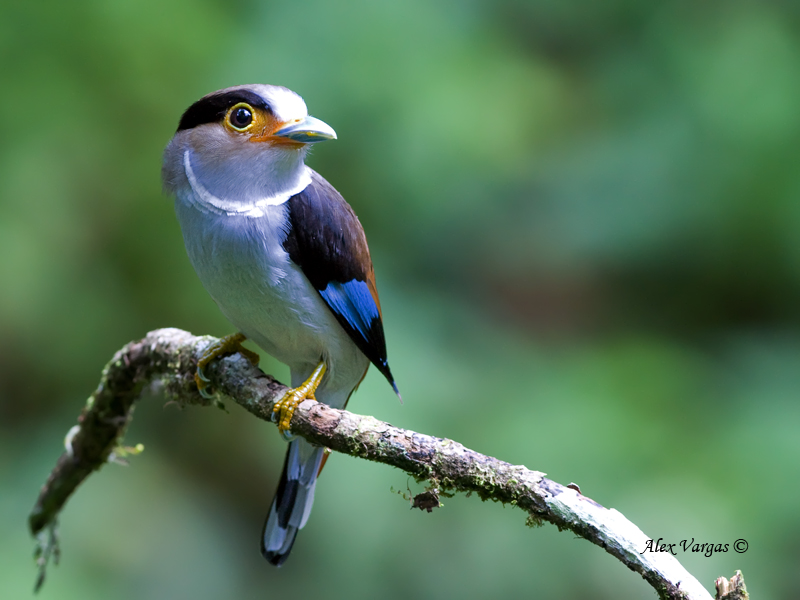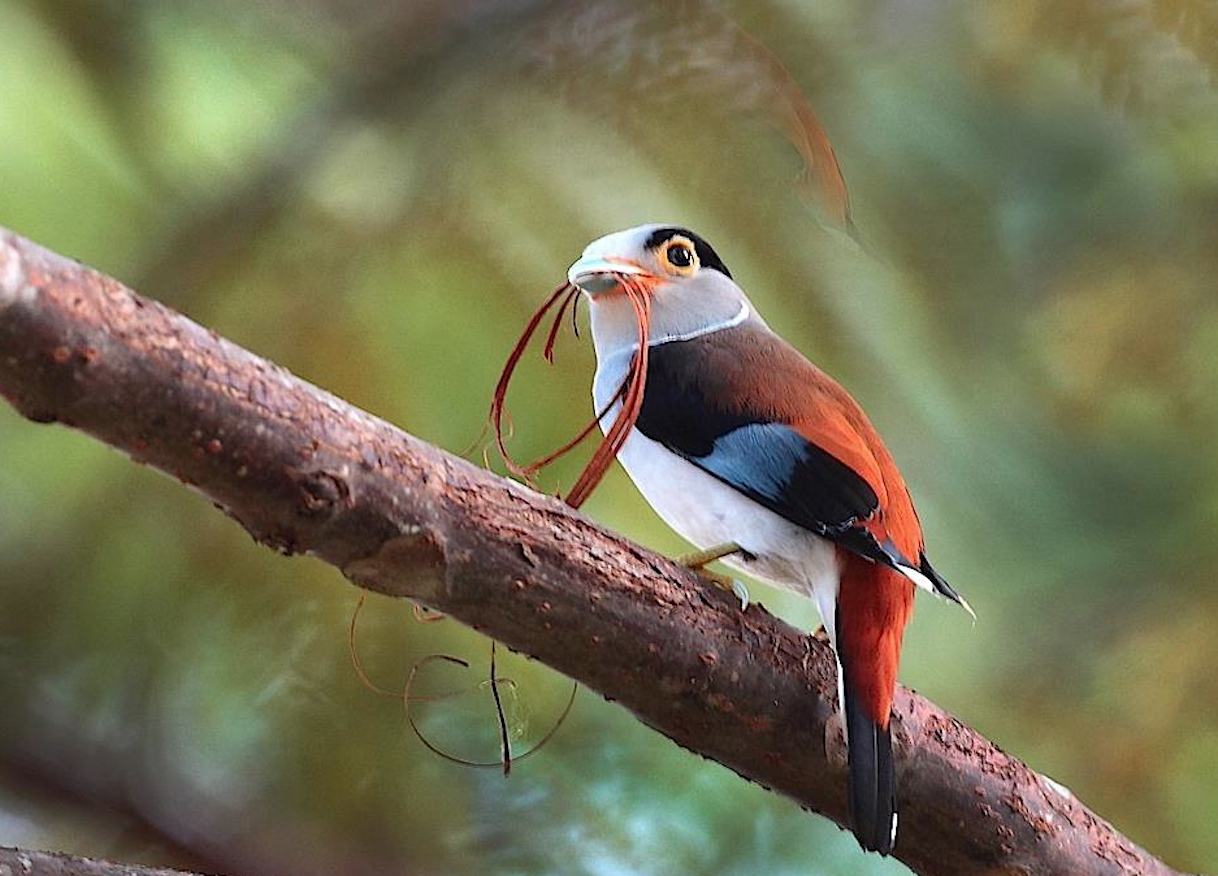
Serilophus lunatus
SUBFAMILY
Eurylaiminae
TAXONOMY
Eurylaimus lunatus Gould, 1833 (1834), near Rangoon. Eight
subspecies recognized.
OTHER COMMON NAMES
English: Gould’s broadbill, collared broadbill, Hodgson’s
broadbill; French: Eurylaime du Gould; German: Wьrgerbreitrachen;
Spanish: Pico Ancho de Pecho Plateado.
PHYSICAL CHARACTERISTICS
6.3–6.7 in (16–17 cm); 0.9–1.2 oz (25–35 g). Grayish head with
black behind eyes. Whitish breast and wingtips. Wings alternate
black and blue with some rusty color. Back is light gray,
turning to dark rust colored at rump and black on the tail.
DISTRIBUTION
S. l. lunatus: Myanmar and northwestern Thailand. S. l. rubropygius:
Nepal east to northeastern India, Myanmar. S. l. elisabethae:
northeastern Myanmar, eastern Thailand, southern China, Vietnam,
and north central Laos. S. l. impavidus: Bolovens Plateau,
southern Laos. S. l. rothschildi: penisular Malaysia and southern
peninsular Thailand. S. l. intesus: Sumatra. S. l. polionotus: mountains
of Hainan. S. l. stolidus: southern Myanmar and northern
peninsular Thailand. Elevational range variable, depending on
location from lowlands to 7,320 ft (2,230 m) in Thailand.
HABITAT
Evergreen and semi-evergreen tropical and subtropical forests.
Often associated with bamboo.
BEHAVIOR
In pairs or mixed and single species flocks. Both parents, and
possibly helpers, care for brood. Some altitudinal and short
distance movements.
FEEDING ECOLOGY AND DIET
Mostly insectivorous; also eats snails and small lizards. Feeds
by gleaning from foliage and branches, ocassionally sallying.
REPRODUCTIVE BIOLOGY
Breeding begins in March to July depending on locality. In the
north coincides with abundant rain and in the south with dry
conditions. Lays four to seven eggs.
CONSERVATION STATUS
Not threatened; rare to locally common. Sold in the local pet
trade in Thailand.
SIGNIFICANCE TO HUMANS
Used as cage bird.
Other popular Animals
Photo Gallery of - Silver-breasted broadbill




 Animalia Life
Animalia Life